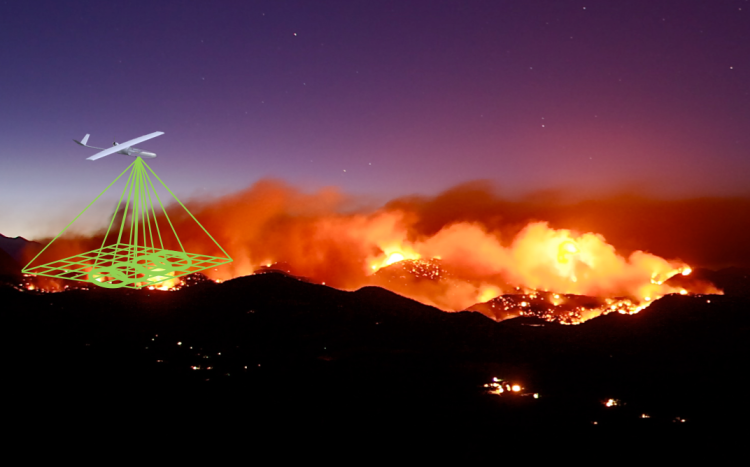NightFOX

Wildfires can strongly affect regional air quality and climate change. NOAA’s FIREX field mission deployment is designed specifically to study wildfire emissions and the impact on air quality. A wildfire’s intensity and emissions depend on meteorological conditions. This tends to leave fire plumes more concentrated during the night. Piloted research aircraft flights are limited to daytime operations due to potential dangers associated with nighttime operations. This limitation leaves a large data gap in covering fires that a capable UAS observation system fills.
NightFOX advances the readiness of a UAS observation system and observation strategy for nighttime wildfire measurements to fill this critical data gap. Project Nighttime Fire Observations eXperiment (NightFOX) is focused on gathering data from night fires. The collaborators for this project include researchers and support from ESRL CSD and GSD, the Cooperative Institute for Research in Environmental Sciences (CIRES), Aerospace Department at the University of Colorado Boulder, IRISS, the University of Colorado Denver, the University of Utah, and the NOAA Unmanned Aircraft Systems Program Office.
IRISS intends to carry out the operations for NightFOX in collaboration with NOAA and Black Swift Technologies (BST). Using a fixed-wing UAS for the flights, we evaluated the strategies and assed the payloads for the UAS. The team assembled and designed two light-weight instrument payload packages for the investigation of wildfires. These included an in situ payload to quantify fire emissions and a remote payload to map fire extent and properties. Our goal was to integrate these payloads onto a SuperSwift UAS manufactured by BST and operated by the University of Colorado, then deploy the integrated system for nighttime wildfire measurements. Measurements were made in support of the FIREX field mission and to examine their utility for evaluation and improvement of fire weather forecasting models.
The goals for the project were to develop and evaluate in-situ (fire plume) and remote-sensing (fire perimeter and radiative power) UAS payloads for wildfire measurements. A secondary intent was to evaluate the capabilities of the S2 (SuperSwift) UAS, and its suitability for wildfire observation operations (wildfire UAS Observation Systems (UASOS)). The team expected to perform nighttime wildfire observations during the NOAA/NASA FIREX-AQ field campaign and evaluate the wildfire observing strategies, with the end goal of incorporating fire observations to inform, test, and improve fire weather modeling.
We look forward to continuing this work through the next fire season.


